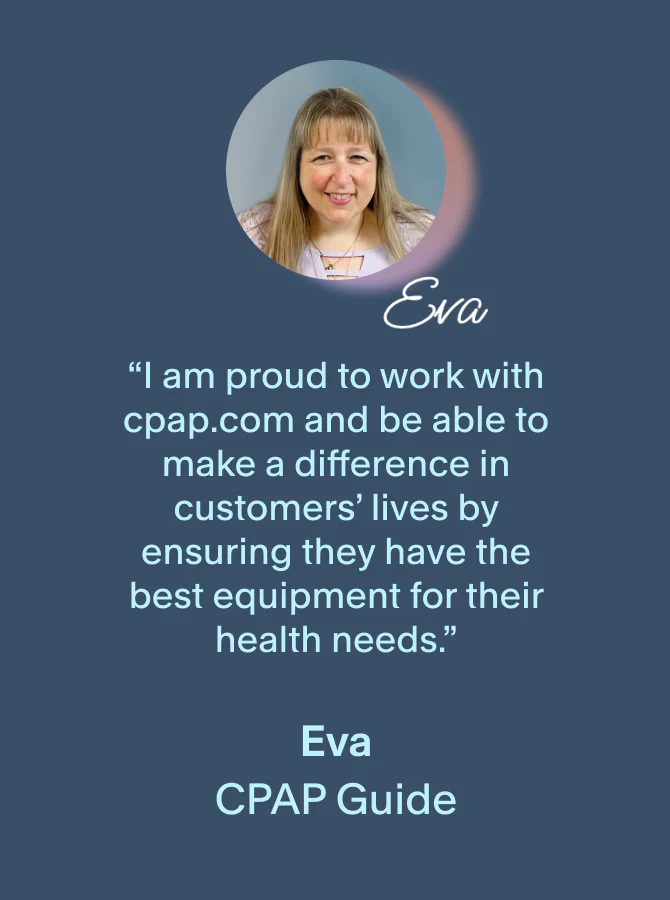Our content undergoes rigorous expert review, evidence-based research, and regular updates for accuracy.
Many individuals all over the world benefit from better sleep because of CPAP therapy. CPAP improves the quality of life for patients with sleep apnea, obstructive sleep apnea (OSA) and other breathing disorders. But, although CPAP machines are now commonly used, the inventor of this marvelous device is hardly ever discussed. So, let's get down to the history of CPAP and the one who invented it.
Who Invented CPAP?
It all began in 1980 when a man treated his dog's breathing issues with a vacuum cleaner. Soon after that, it became clear to him humans could benefit from the same type of therapy, giving the man, Dr. Colin Sullivan, an opportunity to propose an experimental therapy on humans with a machine he created using a vacuum cleaner motor and attached mask and hoses. After gaining the approval from his patient to try the experiment, he used the machine to circulate air through the patient's respiratory system. After several hours of testing out his new machine, he realized he stumbled on to something that was going to help make a huge difference in the lives of patients with Sleep Apnea and other breathing disorders. Dr. Sullivan's interest in sleep and breathing started during his time in New South Wales as a Fellow of the Asthma Foundation where he worked with David Read, his mentor and a specialist in SIDS or sudden infant death syndrome. The two of them together theorized SIDS was most likely due to a breathing defect during sleep. To confirm their theory and study breathing and sleep even further, Dr. Sullivan began working on some research in Canada at the University of Toronto. He went on to receive an award by the American College of Chest Physicians just a year later for his research on sleep and the airways. Also, during this time, Dr. Sullivan continued studying breathing difficulty by working with various breeds of dogs with restricted airways. Many dog owners are well aware of the deafening snores of:
- Pugs
- Bulldogs
- Boxers
Dr. Sullivan speculated by pumping air into the respiratory tract continuously, it could improve breathing during sleep. His theory showed promising results and the first CPAP machine was invented in 1981. Patients were even allowed to take their own CPAP machine home with them so they no longer had to sleep in a lab to receive treatment.
Before CPAP Therapy
Prior to the invention of the CPAP machine, the most common therapy option widely used to treat severe OSA was surgery. The surgeon would put you to sleep and remove a section of your respiratory system surgically that was causing the blockage leading to OSA. They would even have to create a permanent tracheostomy in certain severe cases. This is where the surgeon created an opening (incision) in the patient's windpipe or trachea and inserted a tube to allow air to bypass their upper air passage. Surgery, however, was invasive and came with many risks. Tracheostomies were performed for over a decade and it wasn't until 1981 where OSA treatment could result from less-invasive procedures.
Purpose of CPAP Therapy
CPAP therapy involves the use of the CPAP machine that includes:
- A mask that fits over your nose and mouth (or just your nose)
- A tube connecting the mask to the motor of the machine
- Straps to keep the mask in position
- A motor that blows the air into the tube
CPAP therapy helps with the treatment of sleep-related breathing disorders like OSA. It can also help treat preterm infants with underdeveloped lungs. In some cases, after starting CPAP therapy, some patients will notice an immediate improvement in their symptoms such as:
- Reduction or elimination of snoring
- Better sleep quality
- Less daytime sleepiness
There are also long-term benefits that patients may not notice but are equally important such as:
- Controlling or preventing high blood pressure
- Improving memory and other cognitive function
- Lowering the risk for stroke
How the CPAP Machine Evolved
Over the years, CPAP machines have gradually become intuitive and advanced machines to battle sleep apnea so you can rest comfortably.
Technical Improvements
CPAP masks were customized using plaster mold in the beginning according to the patient's face. The mold was turned into a fiberglass mask. Manufacturers placed tiny air inlets in the fiberglass and then placed tubes through these holes. Using a silicone adhesive, you would attach the mask so it wouldn't slip off in the middle of the night. Since then, there have been increasing technological improvements in CPAP devices such as:
- The machines have become much quieter and smaller
- The straps and masks are much more comfortable than with the older machines
- Humidification was added to keep the airways from drying out. The heated humidifier warms the water in the humidifier chamber using heat, producing moisture in the air you breathe. You can adjust the heat level to receive less or more moisture
- Air pressure levels are self-adjusting, keeping pressures low in the beginning to help you fall asleep and then auto-adjust to the prescribed level once you're in a deep sleep
Ramp Pressure
There have been advancements from a single pressure unit where the doctor would have to place different valves on the unit's output end to obtain different pressure settings to the unit now having the ability to program different pressures into the unit and being able to ramp pressure. Most CPAP machines today have a "ramp" comfort setting. The ramp setting simply allows the device to start off at a lower pressure and increase the pressure gradually over a set period of time to keep your upper airway from collapsing while you sleep.
Smart CPAP Machines
There are also "smart" CPAP machines like the technologically advanced AirSense 10 AutoSet. This machine uses auto-titration, meaning it literally breathes with you. The AirSense uses the AutoSet Advantage algorithm to provide the most optimal setting of pressure exactly when you require it, so you don't need to ever worry about receiving too much or too little pressure. The advanced algorithm measures things like:
- How loud you're snoring
- How hard you're breathing
- The sleeping position you're in
If the machine detects you require more pressure, it provides you with more pressure. If it senses your body is in a relaxed state, it lowers the pressure setting, resulting in a comfortable CPAP experience. With older machines, there was only one setting — the prescribed pressure setting a sleep doctor determined during a sleep study. Machines with a “fixed” pressure setting can be inconvenient since your pressure requirements can change due to:
- Health
- Weight
- Stress level
- Age
They can even change during the course of just one night. To have your machine adjusted with a fixed pressure machine, you’d often need to go through another uncomfortable and expensive sleep study. With auto-titrating machines, however, you simply turn your machine and that’s it. It will detect the optimal setting for you at all times, ensuring you’re always receiving the exact pressure you require at all times.
Portable Machines
In the past, CPAP machines were bulky and heavy and were almost impossible to travel around with. However, today the machines have become much smaller and more portable. Some machines can even fit in your hand. Manufacturers have only just recently been able to bring the size and weight of the CPAP machine down in pounds incrementally to just over a pound. Travel-sized CPAP machines, like the ResMed AirMini Travel CPAP Machine, are popular for those who travel for work or pleasure. With scale reductions competing with a computer chip industry, there have been numerous small CPAP devices weighing a pound or less. These days, while somewhat difficult to achieve, all manufacturers are realizing how important portability is and are addressing the issues of size and weight by keeping a focus on components of small, light and having functional portability.
The Emergence of Other Types of CPAP Therapy Machines
If you’re new to continuous positive airway pressure, you may have been introduced to a variety of new terms, including BiPAP and APAP. Like CPAP, these are forms of airway pressure for people with OSA, but with some feature differences. BiPAP stands for Bi-level Positive Airway Pressure, and as the term implies, a BiPAP machine offers two levels of airway pressure and two different settings. BiPAP was introduced in the 1990’s. APAP, which stands for Automatic Airway Pressure is automated to work within a pre-set pressure range. In other words, with an APAP machine, it automatically adjusts to meet each individual’s unique breathing needs, which often change during as the person moves in and out of different sleep stages.
Other CPAP Therapy and Machine Advancements
Some of the most recent advancements in CPAP therapy and machines include:
- The ability to track hour usage (machines of the past couldn't discern the difference of simply being turned on blowing air randomly to actually being used by the patient or not).
- Wireless ability through Bluetooth and cell technology enabling clinical changes wirelessly to the units.
- The ability to download data to see if the patient is compliant.
- The emergence of heated tubings for preventing rainout in the tubing.
Sure, CPAP therapy can be a challenge. And, this challenge is in finding the best combination of the CPAP machine, CPAP mask and CPAP heated humidifier for your individual needs. Around 50 percent of all sleep apnea patients prescribed with CPAP therapy will fail on or abandon treatment, according to the American Sleep Apnea Association. But, learning about living with sleep apnea and overcoming these challenges are key to successful treatment. Technology advances today are continually making CPAP devices "smarter." This makes treatment easier to use and effective, helping you feel the best you can.
Purchasing Your First or Upgraded CPAP Machine
Consult with your doctor, sleep technician or home medical equipment (HME) provider about when you qualify for a new CPAP machine. They’ll give you your prescription and any other form you need to get one. Although five years is the average machine age where you’d become eligible for a new machine, your insurance coverage will ultimately decide the timespan. Browse through our large selection of CPAP machines, CPAP masks, CPAP accessories, and CPAP supplies today.







